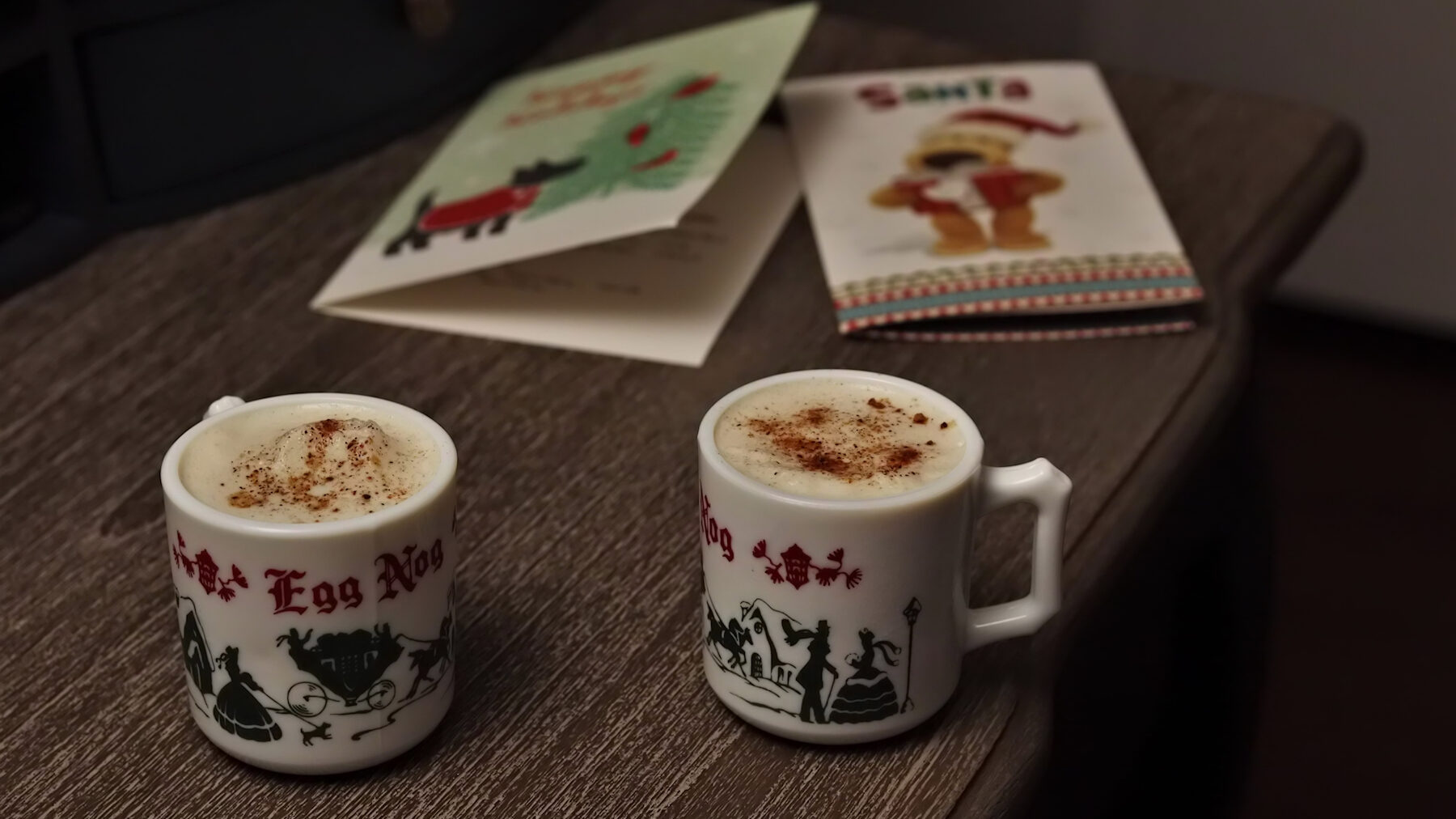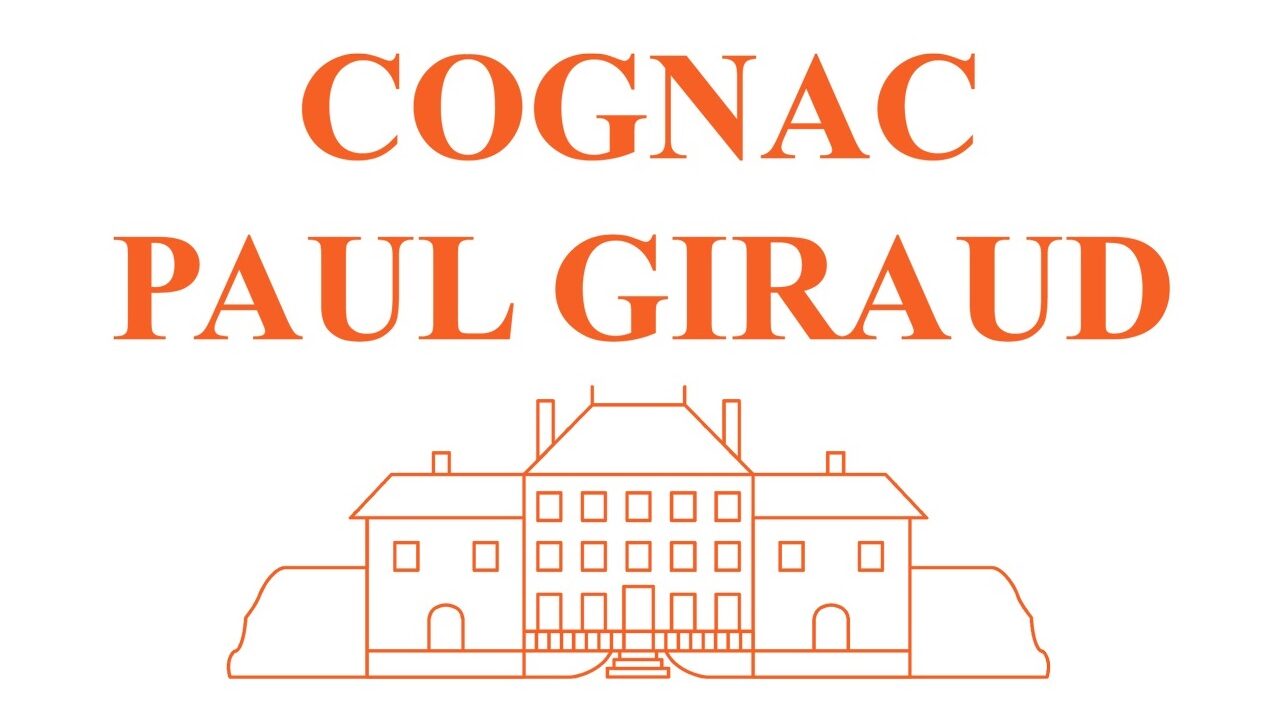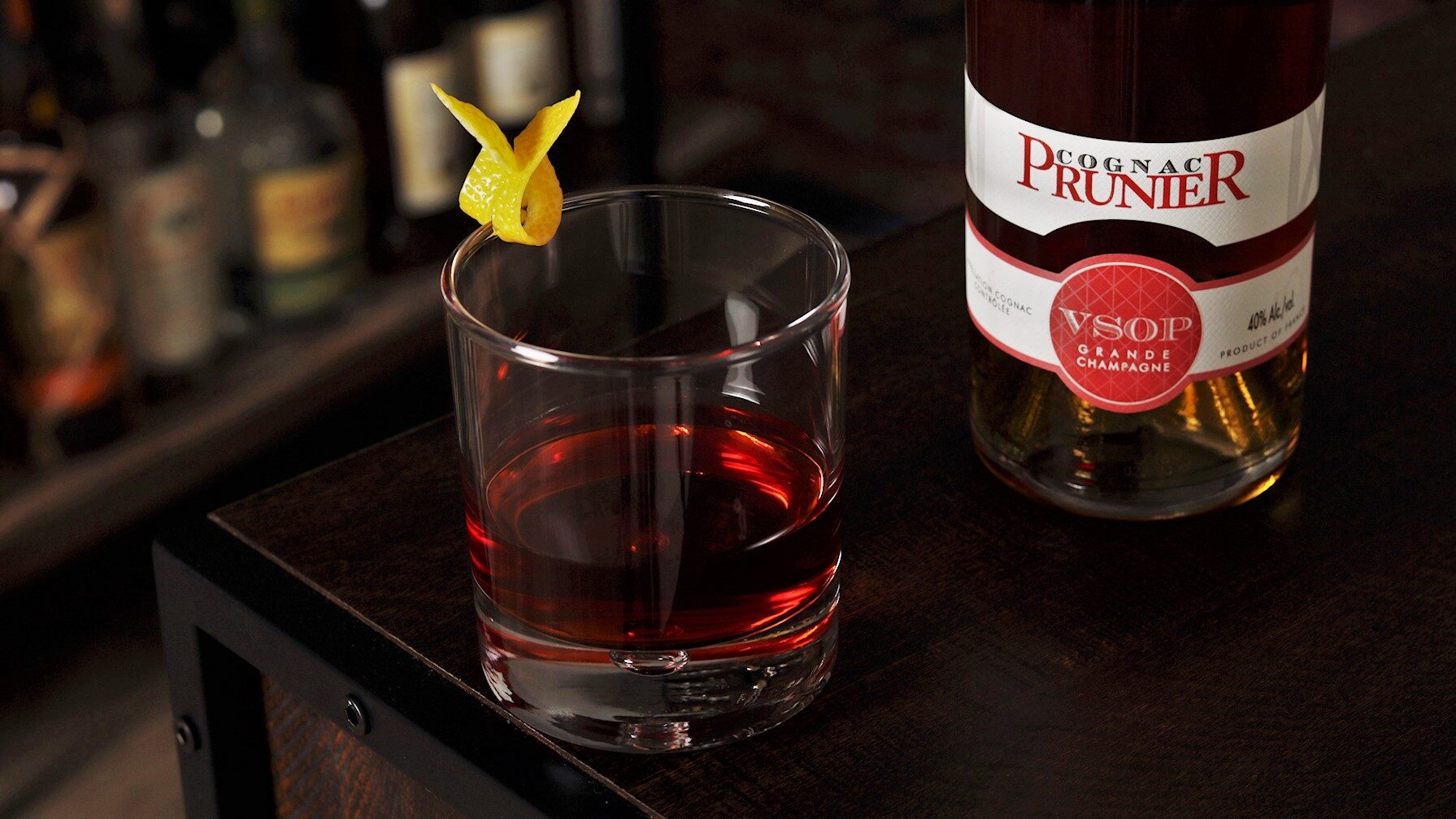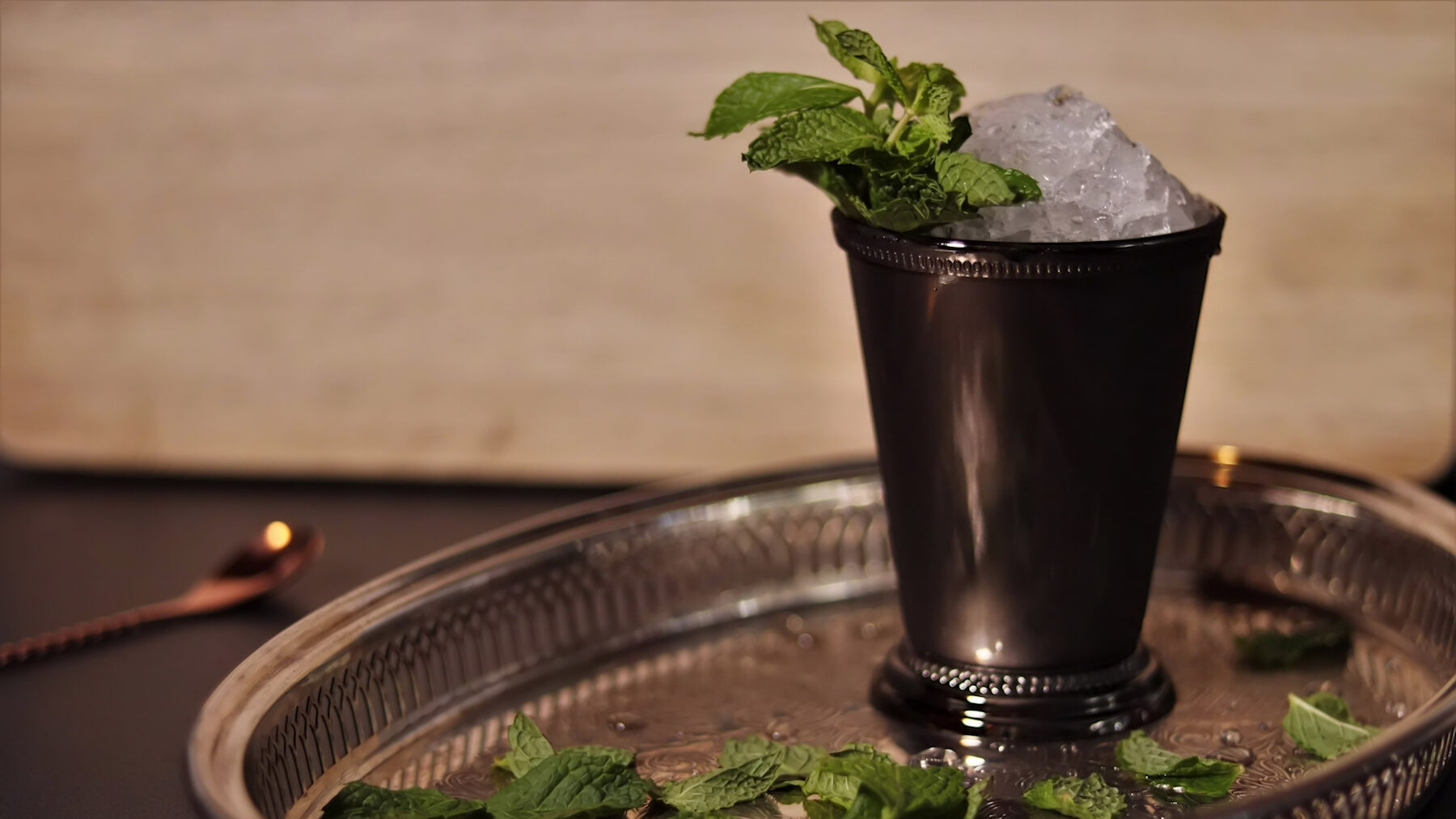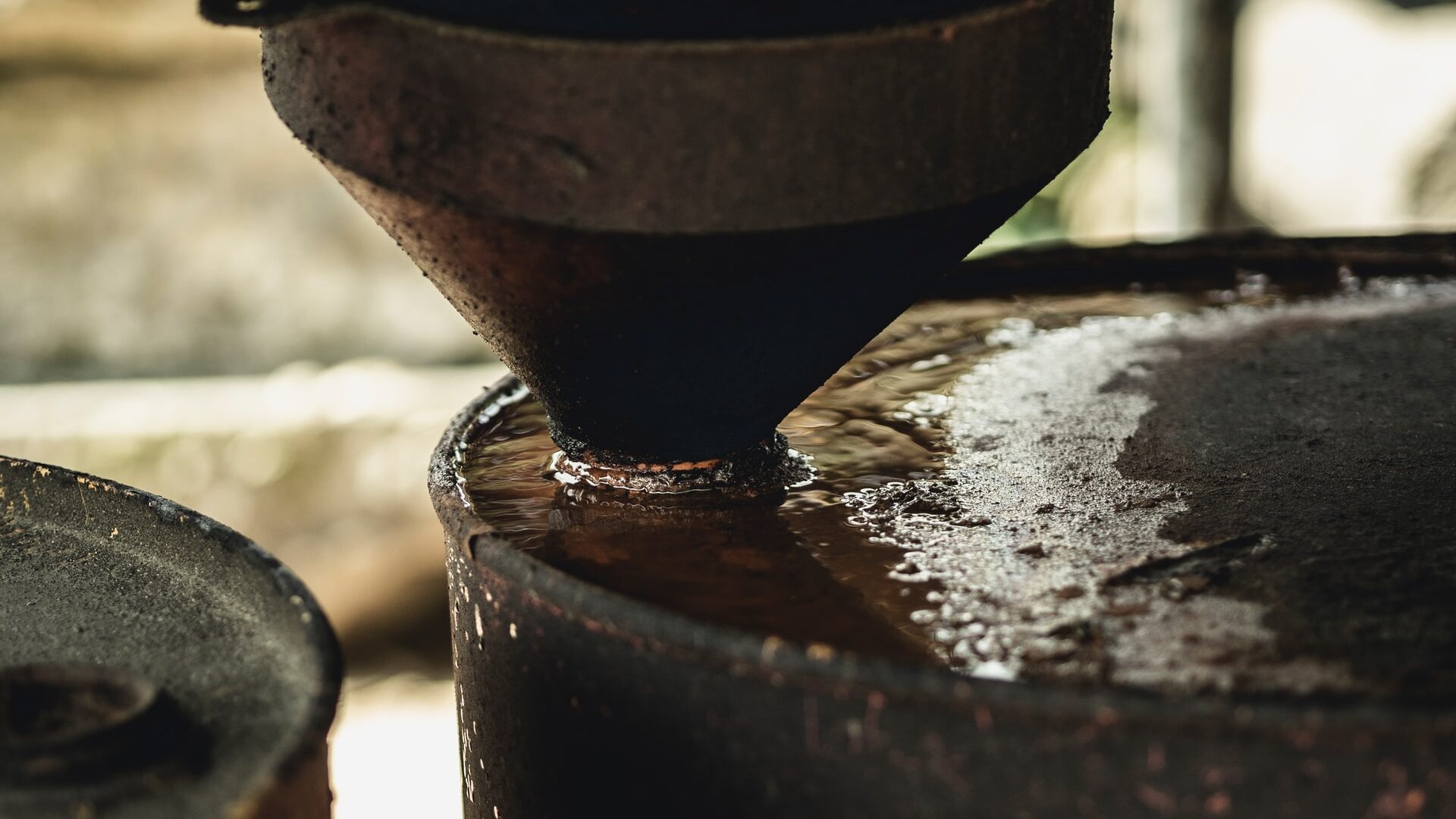It happens every year. The weather gets cold, people put festive lights up on their houses, and you go spend some time with your family. Yes, it’s the holiday season! And with the holidays comes delicious foods, sweets, and even cocktails. While there is an endless amount of holiday inspired cocktails, both classic and more modern, from all over the world, the most iconic here in America has got to be eggnog. I always remember my mother buying it at the grocery store in a bright yellow carton. I got so excited when eggnog started to line the dairy coolers. While I shudder to think I ever enjoyed that preservative laced sugar bomb (I was a kid, I didn’t know any better), real eggnog is much different and, most importantly, incredibly delicious.
It’s unknown when eggnog as we know it today was truly invented, but some form of it has been around since the 14th century. It’s believed to be originated from an early medieval British drink called Posset, which was essentially a warm, milky ale-like beverage. Various forms of it were consumed all over Europe, changing here and there slightly, over hundreds of years. The hot aspect eventually disappeared and it was served cold. Ale was replaced by Cognac, sherry, or rum.
This was a drink for the rich, however, as dairy products and “fancy” liquor was expensive. Sorry working class, you got no nog. Fast forward to the 18th century and the drink ended up in the newly formed America, curtesy of their British rulers, and slowly started to be associated with the holidays. Farms were abundant in the New World, so milk, cream, and eggs were widely available to the lower and middle class. It didn’t hurt that rum was one of the cheaper spirits available at the time, so of course that was thrown in for good measure. If you ever have to ask, “should we add booze to this?” the answer is almost always yes. Yes, you should. And add it they did!
Much like the origin of eggnog being unknown, the name itself is a bit of a mystery, as well. Scholars think that it could come from a few different words. One being that the “nog” part comes from “noggin,” which was a wooden cup used for drinking alcohol. Some others believe that “nog” came from the word “grog,” which was a strong beer. And since, as far as we know, when people were drinking Posset, it used beer in the recipe, so that seems to make sense. Regardless of the word origin, by the end of the 18th century, the name eggnog stuck.
The beverage became incredibly popular. Even George Washington himself recorded his own personal eggnog recipe, heavy on the alcohol, of course. Word traveled to Mexico where they created their own version of eggnog called Rompope made with Mexican spices and local rum. Puerto Rico made Coquito with coconut milk. Germany has an eggnog called Biersupp which uses beer. In Iceland, eggnog is served hot much like a Tom & Jerry. Even Canada has an eggnog-like concoction called Moose Milk (no, I’m not making that up).
But something terrible happened in the 1930’s. Right after prohibition ended the commercialization of products really started to take off. The mass production of foods and beverages were a big business, and that included eggnog. By the 1950’s, it wasn’t uncommon to find those cartons of eggnog in grocery stores. The bad thing about it was that it was absolutely nothing like real, fresh eggnog.
They pumped it full of sugar and artificial flavor. The FDA states that these products only need to contain 1% of egg yolk to be labeled as eggnog. So, what’s in the rest of it if not egg? From the label itself, some of the ingredients listed are milk, high fructose corn syrup, tetrasodium phosphate, guargum, carrageenan, artificial vanilla and other flavorings, and my personal favorite an “egg base,” whatever that even means. Sorry grocery stores, that stuff is about as real as Donald Trump’s hair.
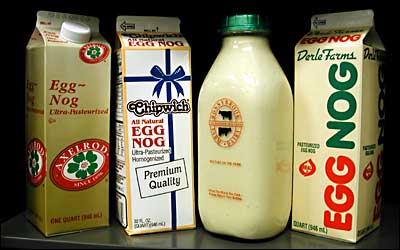
Image from New York Magazine, www.nymag.com
If you’ve never had real eggnog and only the fake, gross stuff in the carton, you really should try it. And luckily for you, I’ve got one heck of a great recipe. Typically, eggnog is made with eggs, cream, milk, and sugar. It’s basically a very thin custard. Then, of course, you need to fortify it with some alcohol. Common choices are brandy or rum, sometimes whiskey, and more rare (but still delicious!) is an aged tequila. Jeffrey Morgenthaler, a well-known bartender and author of ‘The Bar Book’, makes an añejo tequila and sherry eggnog at his bar Clyde Common every year in Portland, Oregon. And it’s very good stuff.
My recipe is based off of his, so he definitely gets some credit here. I’ve chosen to go a more classical route and focus on what they very well may have done back in the 18th century in upper class England and use Cognac and sherry. Granted, mine probably isn’t as boozy as theirs was, but if you’d like you can always add more. So, what goes into my special eggnog? Let’s take a look.
• • • • •
Cognac
No need to break the bank on this one. A standard VS is just fine for eggnog. I’ve used VSOP in the past, but unless it has incredibly strong barrel spices in it and a dominate oak flavor, with all the dairy that’s in this, it really doesn’t make a difference flavor-wise. Something that does seem to make a difference is using a Cognac that has a little higher proof to it. I used Pierre Ferrand 1840, which is 90 proof, this year and it’s probably the best eggnog I’ve ever made. That extra ABV really does help cut through all the heavy ingredients.
Sherry
I used to always choose Amontillado sherry in this recipe. It seemed to reduce the creamy, sweet edge a little bit and almost slightly dry it out, made it less heavy. This is still a great option if you’ve got a bottle at home that you don’t know what to do with. But recently I’ve switched over to using Oloroso. It still offers similar body to the Amontillado, but it adds a wonderful nutty flavor that really amps up the delicious factor of this eggnog. I usually use Lustau brand sherry. It’s very good quality and incredibly affordable. Hidalgo or Osbourne are also great bodegas that make really tasty sherry.
Milk/Cream/Eggs
As you can guess, organic is always a better option than not organic, but I’m not here to start that debate. The most recent batch of eggnog I made used organic eggs, but regular milk and heavy cream. So, it’s totally up to you! I will say, though, that if you can get organic or heirloom eggs, that does alter the consistency. With these pricier eggs, what you’ll get is a larger, fattier egg yolk. That will create an eggnog with more body and make it a little heavier on the palate. Also, my recipe calls for whole milk, but if you’ve got 1% or 2% at home that you’d rather use, then I would decrease the milk and increase the heavy cream.
For example, if you use 2% milk, I’d reduce 2 oz of milk and increase the heavy cream by 2 oz. For 1% milk, decrease it by 4 oz and increase the heavy cream by 4 oz. Basically, we’re keeping the volume the same while also trying to keep the fat content the same since 1% and 2% are lower in fat than whole milk. No, this math isn’t perfect and there are a lot of variables in terms of figuring out fat content, but I’ve never claimed to be a scientist, so this is good enough for me. Lastly, use heavy cream. Don’t get half and half. Heavy cream only. This is not the time to worry about calories. It’s the time to enjoy decadent eggnog!
Garnish
I enjoy either freshly grated nutmeg or cinnamon on the top of my eggnog. Using a microplane, scrap the whole spice over it back and forth until there’s a light dusting on the top of your eggnog. You’ll have to press down pretty hard as whole spices are fairly tough. It’s completely acceptable to use pre ground spices from a dasher container to garnish this, but if you’ve never grated real nutmeg before, it really does have a different flavor than the processed ground stuff.

The Recipe
6 large eggs (organic/heirloom if possible)
1 ¼ cups white cane sugar
18 oz whole milk
12 oz heavy cream
10 oz VS Cognac
8 oz Oloroso sherry
In a stand mixer or large blender on low speed, beat the eggs until they’re a smooth consistency. Increase the speed of the mixer/blender a little bit and add in the sugar ¼ cup at a time, slowly, until fully incorporated and dissolved. Next, slowly add the sherry, Cognac, milk, and heavy cream and let it mix for a minute or two. Refrigerate the eggnog overnight in a glass container and serve in small rocks glasses or punch cups. Garnish with freshly grated nutmeg/cinnamon.
This recipe makes approximately ½ gallon of eggnog. For larger family gatherings, double the recipe. Don’t worry about leftovers. It can stay in your refrigerator for quite a long time to “age,” but I wouldn’t be too concerned. Chances are this stuff is going to go fast!

